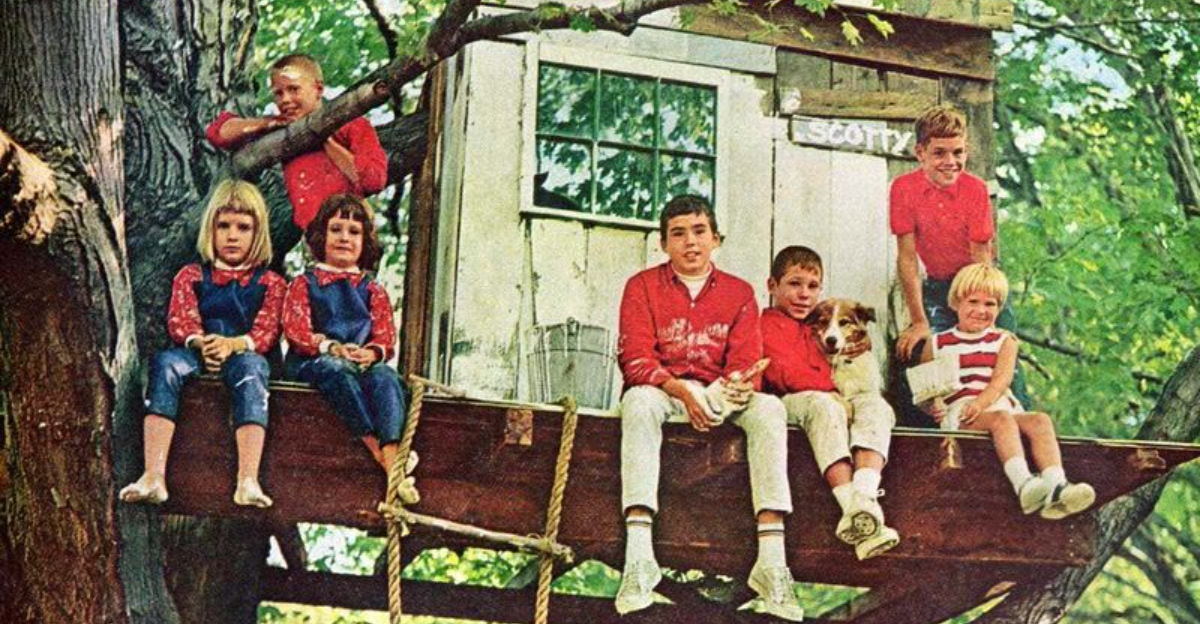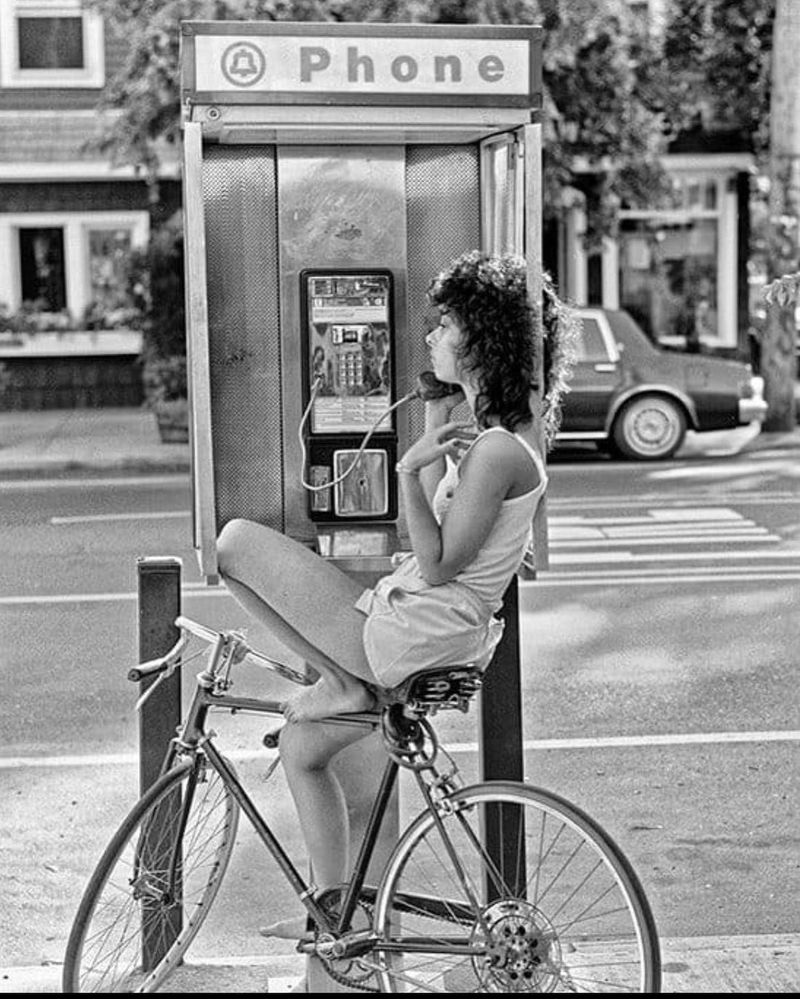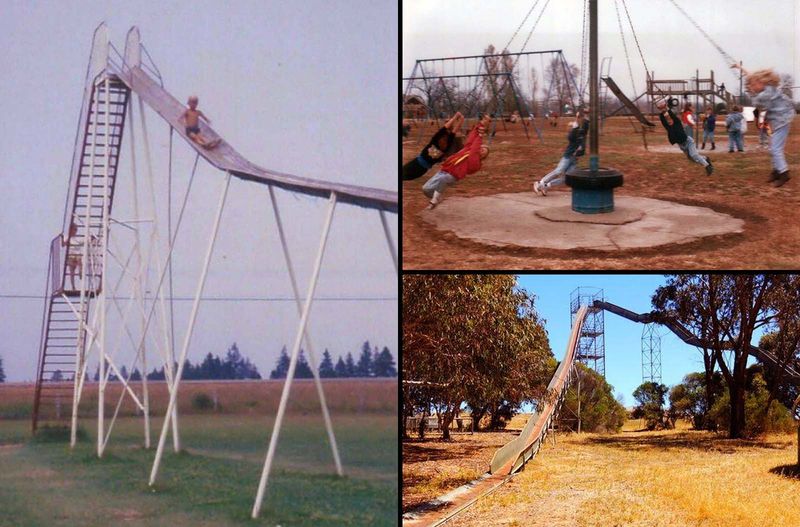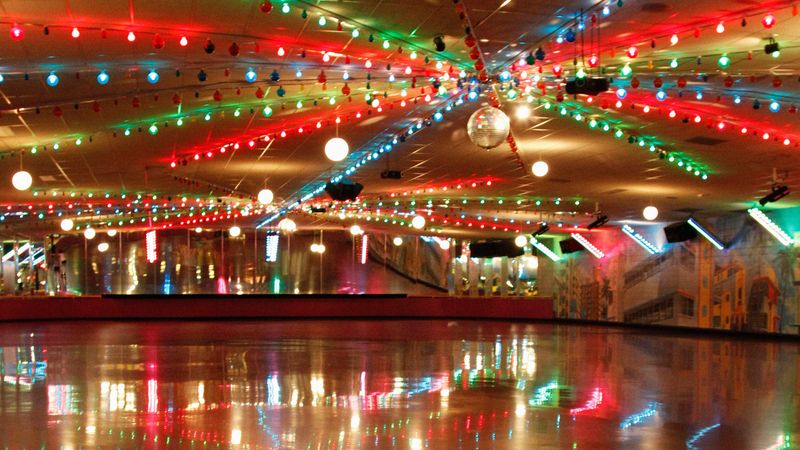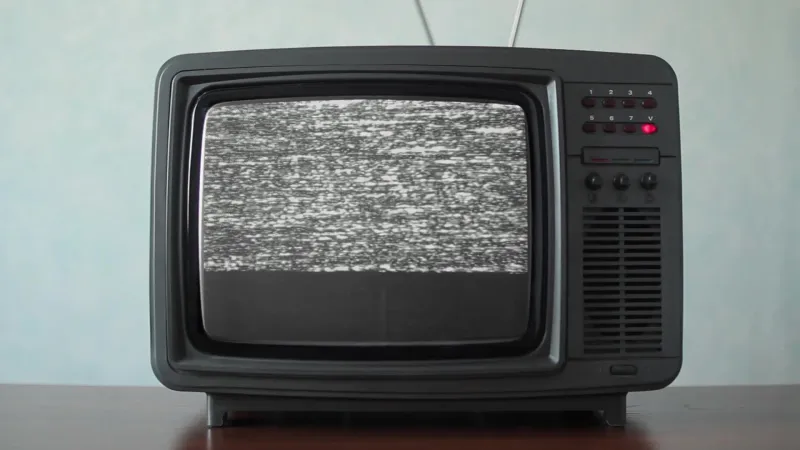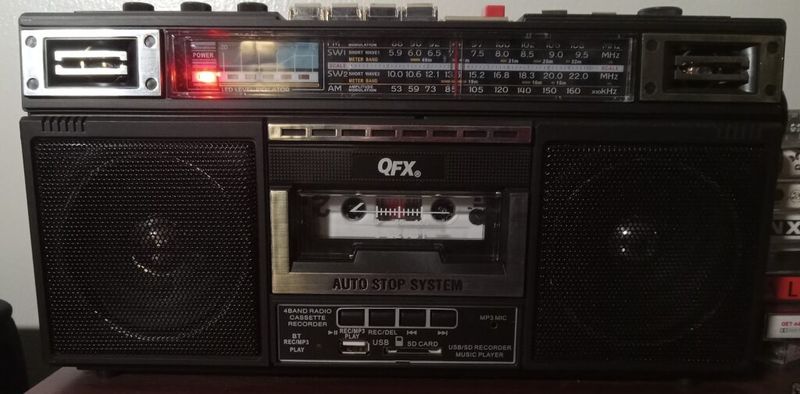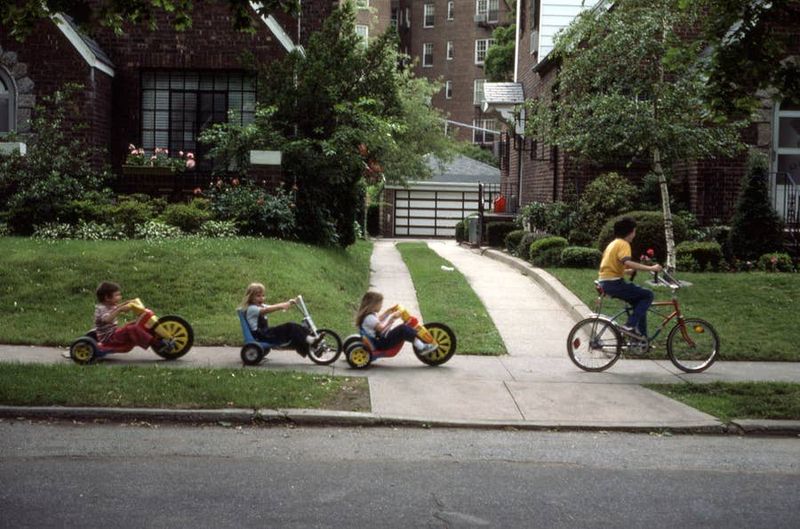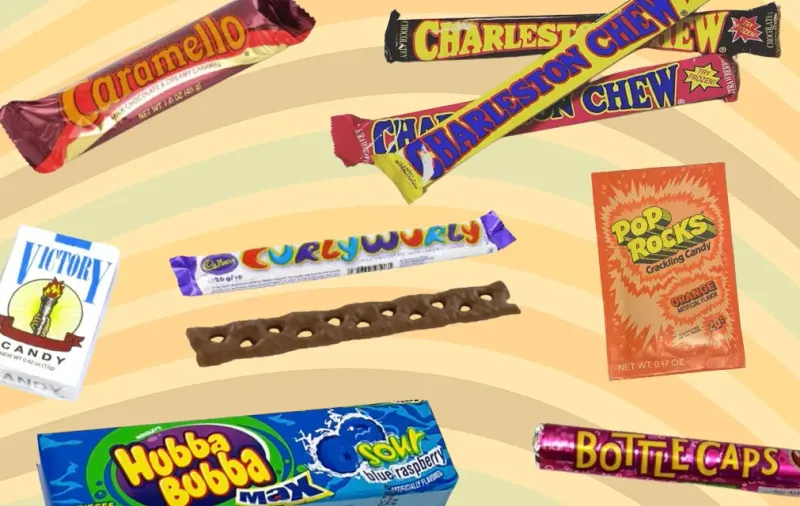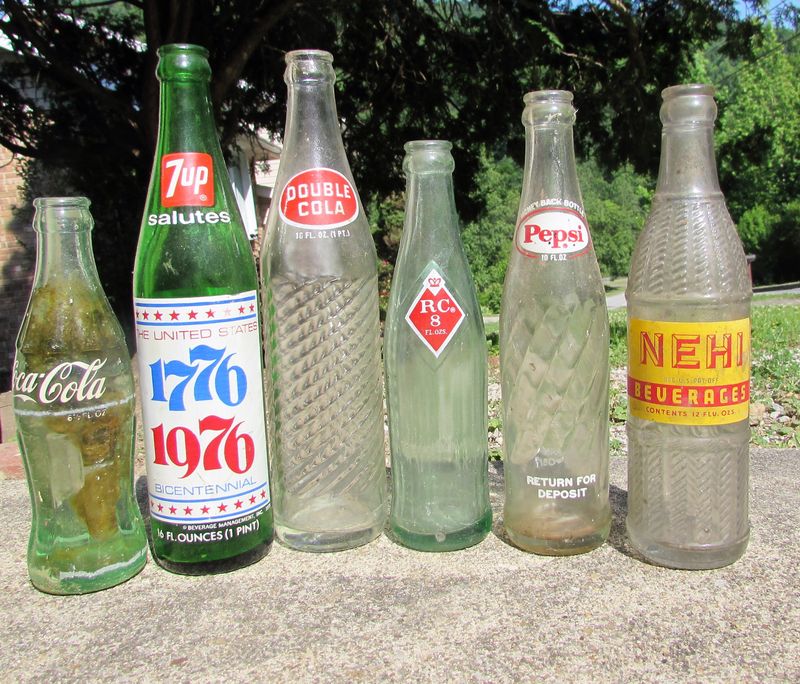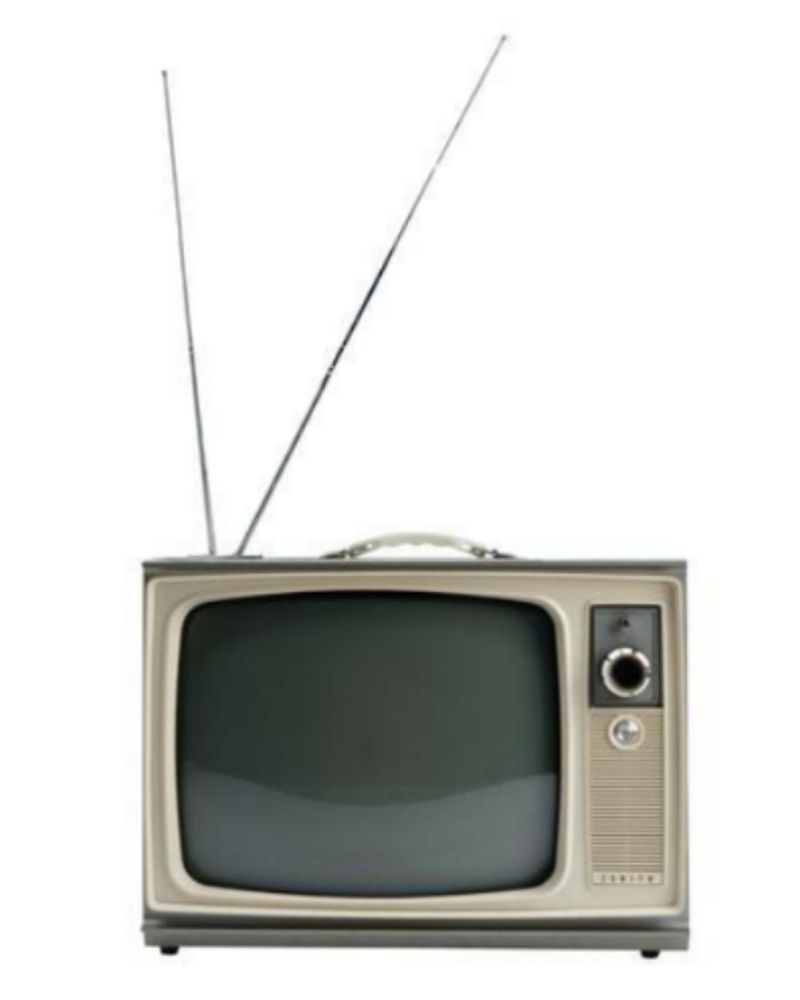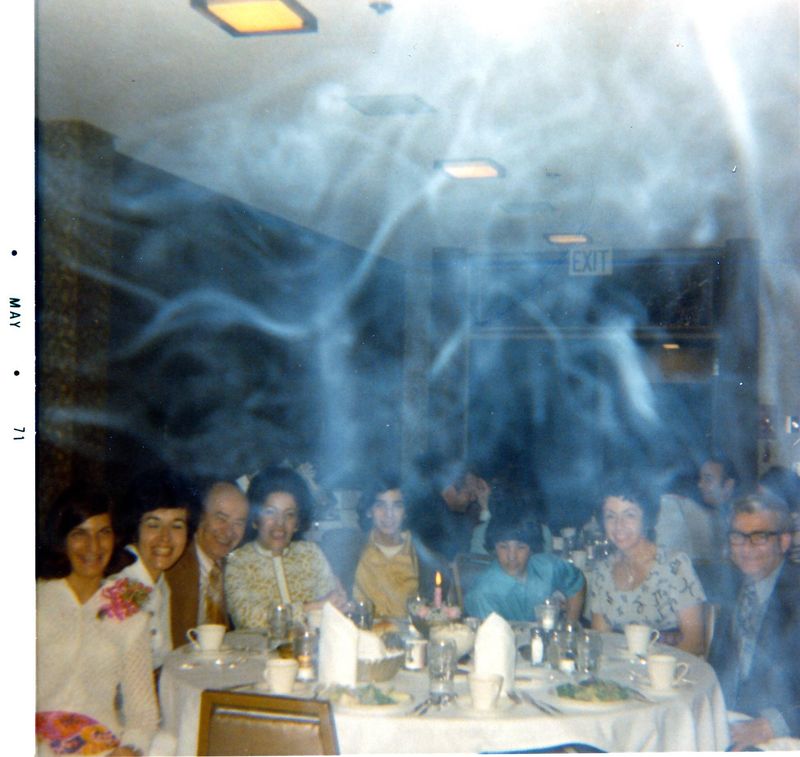Growing up in the 1970s was a unique experience that today’s kids might find hard to imagine. We had freedoms that seem almost unbelievable now, with minimal supervision and maximum adventure. Looking back on those simpler times brings a flood of memories – some dangerous, some sweet, but all part of what made childhood in that era special.
1. Roaming the Streets All Day
Morning sunshine meant grabbing your bike and disappearing until dinner. Nobody tracked our whereabouts with GPS or expected hourly check-ins. Freedom was measured in city blocks, not screen time.
Neighborhoods were our kingdoms, drainage ditches our rivers to conquer. Sometimes we’d ride miles from home, exploring construction sites or finding new shortcuts through strangers’ yards.
Parents’ only rule? “Be home when the streetlights come on.” That simple boundary somehow kept us safe while letting us taste real independence – something today’s helicopter-parented kids rarely experience.
2. Payphones, Not Phones in Pockets
Communication required quarters and planning. Finding a working payphone was sometimes an adventure itself – standing in those half-glass booths, receiver tucked under your chin while digging for change.
Memorizing phone numbers was non-negotiable since there were no contacts lists. The rush of excitement when someone actually answered! No voicemail meant you might bike miles only to get a busy signal.
Conversations were precious and purposeful. “I’ll be home late” or “Can you pick me up?” – then click, time’s up. No endless texting or social media updates, just brief moments of connection before returning to the real world around you.
3. Backyard Treehouse Fortresses
Hammering together our own hideouts without blueprints or adult supervision was peak childhood engineering. Armed with dad’s leftover lumber, rusty nails, and pure determination, we built rickety platforms that probably violated every modern safety code.
No parent ever asked about structural integrity or fall hazards. The splinters and occasional tumbles were just part of the learning curve.
These weren’t Pinterest-worthy playhouses – they were gloriously imperfect creations that taught us self-reliance. We’d spend hours up there plotting neighborhood adventures, trading baseball cards, or just escaping little sisters.
4. No Helmets on Our Bikes
Wind through your hair was the only sensation we knew while bombing down steep hills. Bike helmets weren’t just uncommon – they were practically non-existent in everyday kid life. Nobody’s mom ever shouted, “Don’t forget your helmet!” before you peeled out of the driveway.
Riding no-handed was a badge of honor. We’d stand on the seats, perform wheelies, and carry friends on handlebars without a second thought about safety.
Skinned knees and road rash were expected battle scars. When someone wiped out spectacularly, we gathered around to admire the damage before continuing our adventures – no accident reports or concussion protocols necessary.
5. Swing Sets with Bare Metal Under the Sun
Playground equipment in the ’70s was basically a collection of unintentional torture devices. Metal slides baked under the summer sun until they could practically brand your thighs. Still, we lined up for them repeatedly.
The merry-go-round was a dizzying metal disc that spun at terrifying speeds. Kids would hang on for dear life or get launched into orbit if they lost their grip.
The ground below wasn’t rubberized or cushioned – just packed dirt, concrete, or if you were lucky, some patchy grass. We learned physics the hard way: gravity hurts, metal burns, and tetanus shots follow rusty equipment injuries.
6. Summer Disco Roller Rinks
Friday nights meant one thing: begging mom for rink money. The roller disco was our weekend nightclub, complete with mirrored ball, colored lights, and the sweet smell of rental skate disinfectant.
Couples skate was peak social drama. Getting asked – or finding the courage to ask someone – could make or break your weekend. Bee Gees and ABBA provided the soundtrack while we attempted to look cool despite our awkward adolescent movements.
No phones meant living completely in the moment. Nobody was posting stories or checking messages – just skating, sweating, and navigating the social hierarchy of pre-teen life under the hypnotic spell of that spinning disco ball.
7. No Supervised Science Experiments
Chemistry sets in the ’70s came with actual chemicals that could burn, stain, or explode. Parents bought these dangerous wonderlands without a second thought, then left us completely unsupervised with them.
My Gilbert Chemistry Set had test tubes, burners, and mysterious powders that probably wouldn’t pass today’s safety standards. The instruction booklet was merely a suggestion – mixing random chemicals to see what happened was the real fun.
Backyards became laboratories for rocket launches and explosive concoctions. When experiments went wrong (they often did), we learned valuable lessons about chemical reactions, fire safety, and how to hide evidence before mom got home.
8. Garden Hose Guzzle Breaks
Nothing quenched summer thirst like drinking straight from the garden hose. That first sip was always scalding hot from sun-baked rubber, but we’d wait patiently for the cool water to arrive.
The distinctive taste – part rubber, part metal, part whatever mysterious particles lived in that hose – was oddly satisfying. No one worried about BPA, lead, or bacteria. Thirst was the only concern.
Water fountains required finding a park, but hoses were everywhere. We’d interrupt epic games just long enough for everyone to take turns gulping down water, wiping our mouths with dirty hands, then immediately returning to play without a single thought about hydration strategies or water bottles.
9. TV Went Dark at Night
Television actually ended each night. After the late news and Johnny Carson, stations would play the national anthem, then broadcast nothing but static until morning. Imagine – hours of actual screen-free darkness!
Saturday morning cartoons were our only kid-focused programming. We’d wake at dawn, grab sugary cereal, and plant ourselves in front of the TV for the one window of animated entertainment all week.
With just three channels and no recording options, you either caught your favorite show when it aired or missed it entirely. This scarcity made TV time special rather than constant. When screens went dark, we returned to books, games, and the lost art of staring into space.
10. Making Mix Tapes from Radio
Creating the perfect cassette tape required patience, timing, and a bit of luck. I’d sit for hours beside my radio, finger hovering over the record button, waiting for my favorite songs to play.
DJs were the enemy, talking over intros or cutting songs short. The real achievement was capturing a clean recording without commercials or announcer chatter. A perfect transition between songs felt like winning the lottery.
Each tape became a personal treasure – especially those made for crushes. We’d carefully write out track lists and decorate cases with markers. These analog playlists required real effort, unlike today’s drag-and-drop digital collections, making each one a genuine labor of love.
11. Latchkey Independence After School
Coming home to an empty house was normal, not neglect. With both parents working, many of us wore house keys around our necks and managed several unsupervised hours daily. The responsibility felt grown-up and important.
After-school routines were self-directed: unlock door, grab snacks, maybe start homework or watch forbidden TV shows. No one tracked our movements or activities until dinner.
We learned to solve problems independently. Locked out? Find the hidden spare key. Hungry? Make your own sandwich. Bored? Figure it out without screens. This forced self-reliance built confidence that helicopter parenting rarely allows – we became capable because we had to be.
12. Walking or Biking to School Solo
Elementary school kids navigated neighborhood streets completely alone. First-graders walked or biked to school without adult supervision – something that might trigger child services calls today.
We learned navigation before Google Maps existed. Getting lost meant problem-solving with landmarks and asking strangers for directions. Traffic safety came through experience rather than constant warnings.
The journey to school was often more educational than school itself. We’d collect interesting rocks, observe construction projects, and establish independence. Morning walks meant stopping at friends’ houses along the way, forming packs that grew larger as we approached the school grounds – a daily migration of free-range children.
13. Eating Whatever We Picked Up
Nutrition labels weren’t part of our vocabulary. Candy came in packages with no ingredient lists, and we consumed artificial colors that probably glow in the dark. Red dye? Yellow #5? Bring it on!
Corner stores were magical places where pennies transformed into sugary treasures. Pixie Sticks were literally tubes of flavored sugar, consumed by pouring directly down the throat. Candy cigarettes let us practice looking cool while rotting our teeth.
Food safety concerns didn’t exist in our world. We’d eat fallen candy (five-second rule!), share half-eaten snacks, and accept homemade treats from neighbors on Halloween. Somehow we survived this chemical-laden, germ-sharing free-for-all.
14. Soda Cans for Candy Trade
Empty bottles were childhood currency. Long before recycling became environmental, it was entrepreneurial – each glass soda bottle returned to the store meant 5 or 10 cents in our pockets.
We’d scour neighborhoods and ditches for discarded empties, filling wagons with sticky treasures. The real jackpot was finding a full case of returnables in someone’s garage – instant wealth!
The bottle return counter exchange was serious business. We’d count our bounty carefully, then immediately reinvest in penny candy or baseball cards. This economic system taught us value, work ethic, and the sweet satisfaction of turning trash into treasure – all without a single chore chart or allowance negotiation.
15. Drive-In Movies & Family Stations
Summer evenings meant piling into massive station wagons – parents up front, kids bouncing unrestrained in the “way back.” Seatbelts were optional accessories rarely clicked into place.
The drive-in movie theater was magical. Dad would position the car just right, hook that clunky metal speaker onto the window, and we’d spread blankets across the hood. Tinny sound and distant projection created an experience no home theater can match.
Falling asleep during the second feature was inevitable. We’d wake up being carried from car to bed, still wrapped in blankets that smelled like popcorn. The gentle motion of being transported inside was the perfect drowsy conclusion to a perfect summer night.
16. Spinning Vinyl & TV Static
Music required physical interaction. Records needed flipping halfway through, and the ceremonial cleaning of dust before the needle dropped was almost religious. That first crackle before the music began built anticipation digital streaming can’t replicate.
Television required similar effort. Rabbit ear antennas demanded constant adjustment – often resulting in one person standing awkwardly beside the set, holding the antenna at the exact angle needed for reception.
The UHF dial opened up mysterious channels in the higher numbers, though usually with ghostly reception. When stations signed off, the static screen’s hypnotic fuzz and white noise became its own late-night entertainment – a visual campfire for insomniacs.
17. Smoking Indoors—All the Time
Cigarettes were everywhere. Teachers smoked in faculty lounges while doctors puffed away in examination rooms. Nobody thought twice about lighting up in elevators, airplanes, or hospital waiting areas.
Restaurants didn’t have non-smoking sections until late in the decade. Going out to eat meant returning home with clothes and hair reeking of smoke – just the normal smell of public existence.
Cars became rolling smoke chambers on family road trips. Dad would crack the window slightly while chain-smoking down the highway, creating a wind tunnel that somehow made everything worse. Ashtrays were standard features in every armrest, and those little metal lighters in car dashboards were pushed more frequently than radio buttons.
